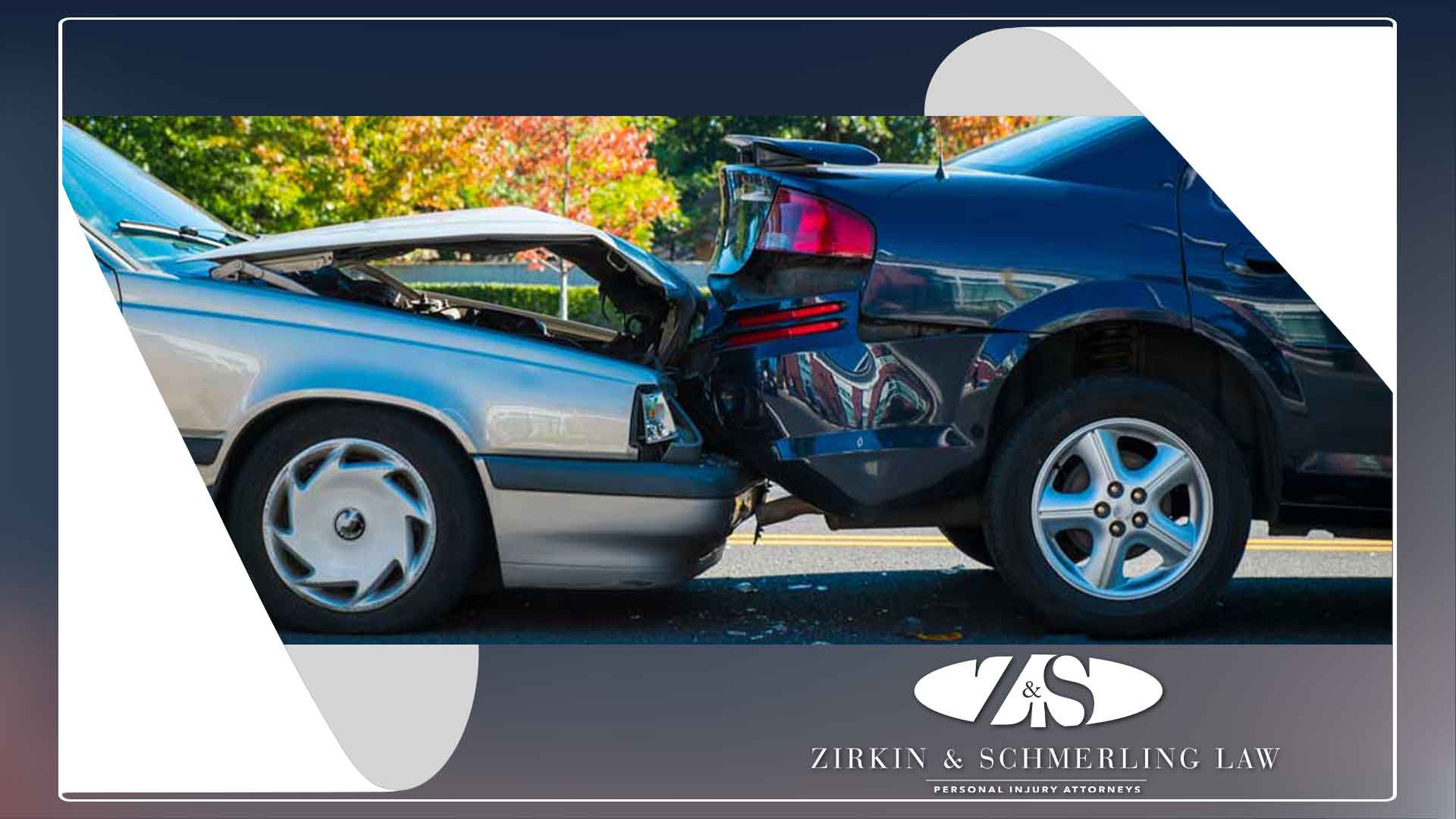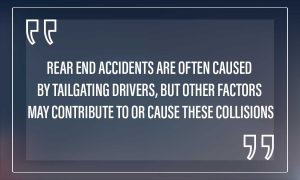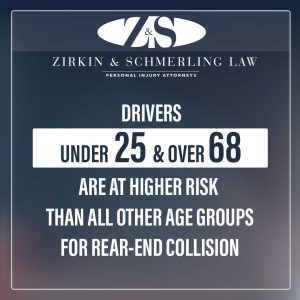
A rear end collision refers to a type of car accident where one vehicle crashes into the back of another. These crashes are incredibly common and often result in painful and debilitating injuries.
Although rear end collisions are frequently caused by a following driver failing to stop, there are situations in which the driver operating the leading vehicle is partially or wholly responsible.
If you’ve suffered from a rear end accident and are wondering who is at fault, you can contact a car accident attorney to assist you with your case. The lawyers at Zirkin & Schmerling Personal Injury Attorneys have many years of experience handling rear end collision cases, and our team is ready to fight for your case so that you recover just compensation.
In this blog, you’ll learn the answer to the question, “Who’s fault is it in a rear end collision?” and the factors that determine liability.
Maryland Tailgating Laws
The majority of rear end collisions occur due to the negligence of a driver following another vehicle. The driver fails to stop or slow down, resulting in them colliding with the leading vehicle.
Many negligent drivers in Maryland who are responsible for rear end collisions have violated Title 21, which forbids tailgating, the act of following another car too closely. Maryland’s Transportation Code TR 21-310 states:
“The driver of a motor vehicle may not follow another vehicle more closely than is reasonable and prudent, having due regard for the speed of the other vehicle and of the traffic on and the condition of the highway.”

When a driver tailgates, they significantly reduce the safe stopping distance between their vehicle and the one in front of them, leaving little time to react if the leading driver slows down or needs to make a sudden stop. This lack of space creates a high-risk situation and can result in a serious rear end collision.
Rear end accidents are often caused by tailgating drivers, but other factors may contribute to or cause these collisions.
Who is at Fault When Rear Ended?
If you’re wondering, “Who’s fault is it in a rear end collision,” the answer will depend on both drivers’ actions leading up to the accident. Again, most rear end accidents occur due to the second driver failing to slow down or stop their vehicle. Some of the reasons why this may occur include:
- Distracted driving: When a driver engages in distracting activities like texting, talking on the phone, eating, or using navigational devices, they may fail to spot a leading car.
- Hazardous weather conditions: Rain, snow, and ice can create slippery road surfaces, increasing the likelihood of rear end collisions. Motorists should greatly reduce their speeds in slick driving conditions.
- Speeding: If a driver operates their vehicle above the speed limit or drives too fast for hazardous weather conditions, they’ll have less time to react to a decelerating or stopped car.
- Intoxicated driving: Driving under the influence of alcohol or drugs diminishes your coordination, judgment, and reaction time, increasing the risk of rear end accidents.
- Driver fatigue: While not as dangerous as driving under the influence of drugs or alcohol, driving while tired also slows your reaction time and negatively impacts your judgment, potentially contributing to or causing a rear end collision.
- Negligent maintenance: A driver may cause a serious rear end collision if they fail to service their brakes or another vehicle component.
Is a Rear End Collision Always Your Fault If You Struck a Car?

Although rear end collisions usually occur due to the negligence of a following driver, there are situations in which the leading driver is at fault or contributed to the crash. Some examples include:
- Sudden braking: Failing to maintain a consistent speed or braking abruptly without warning can catch the driver behind off guard, leading to a rear end collision.
- Brake checking: Brake checking is a form of reckless driving that involves deliberately and abruptly decelerating a vehicle so that the following driver must swerve or quickly brake to avoid a collision. Brake checking is illegal in Maryland.
- Sudden lane changes or improper merging: If the leading driver changes lanes abruptly or without proper signaling, it can cause confusion and lead to a collision with the following driver.
Filing a Personal Injury Claim After a Rear End Accident
Rear end collisions have the potential to cause serious and debilitating personal injuries. Even a 5-mph rear end collision can leave you with injuries that require medical attention.
If you suffered injuries caused by a negligent driver, you’ll need to file a claim to recover compensation. Maryland uses a contributory negligence system, meaning that if you were partially responsible for the accident in question, you won’t be able to recover damages. For that reason, the at-fault driver’s insurance company will likely argue that you were partially liable even if you didn’t do anything wrong.
To prove that the negligent driver was exclusively responsible for the rear end collision, you can use evidence such as:
- Police accident reports
- Eyewitness testimonies
- Photographic and video evidence
- Accident reconstruction experts
- Proof that the other driver broke the law, such as traffic citations
Contact a Maryland Rear End Collision Attorney
If you’ve suffered from a rear end collision in Maryland, the Zirkin & Schmerling legal team is ready to fight on your behalf to ensure you recover fair compensation. Depending on the circumstances surrounding the accident and your losses, you may be able to recover compensation for vehicle damages, medical bills, pain and suffering, lost wages, loss of future earnings, and more.
You can get started with your case today by calling 410-753-4611, or schedule a free case consultation online here.
